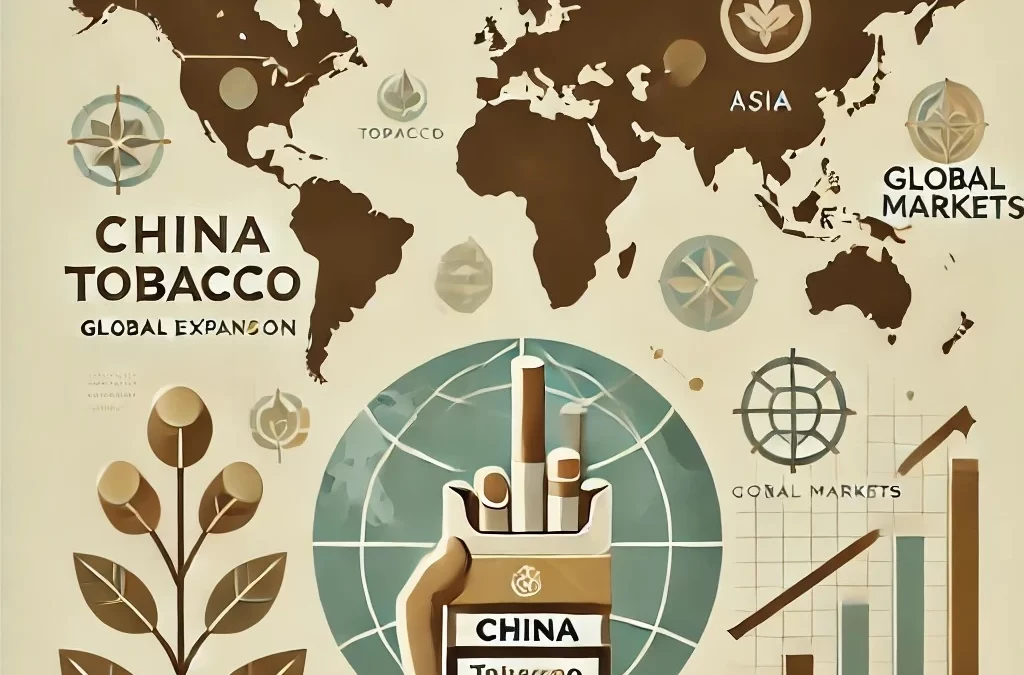China National Tobacco Corporation (China Tobacco) is a colossal force in the global tobacco industry. Despite its dominance at home, this state-owned entity has largely operated under the radar internationally. However, new trends show that it has plans to go international, using its dominance in the home market and its synergy with China’s other economic strategies. This blog focuses on the analysis of the market development plan of China Tobacco and its implications for market planning, regulation, and the tobacco market.
Dominance in the Domestic Market
China Tobacco dominates the Chinese tobacco market by holding 97% market share. In 2023 it generated a record revenue of 1.5 trillion yuan ($210 billion) and became the world’s largest tobacco company in terms of revenue, six times that of Philip Morris International, the second-largest tobacco company in the world. This monopoly is backed by the State Tobacco Monopoly Administration (STMA), which acts as the industry’s supervisory authority and a participant at the same time. Such a structure poses a massive conflict of interest; China Tobacco influences the formation of policies that favor its operations.
However, instead of reducing, cigarette consumption in China has been on the rise. The country’s 300 million smokers are almost one-third of the global smokers. These cigarettes are slim and flavored and are advertised as low-tar cigarettes and the annual sales are expected to be 2.48 trillion sticks by 2028. Despite its commitment to cut smoking rates, Beijing has failed to act because tobacco tax accounts for up to 12% of the total.
The Push for International Expansion
Originally, China Tobacco has been mainly aiming at dominating the domestic market, but recent trends indicate that the market can be oversaturated and regulated more tightly, which is why the company has started actively expanding to the foreign markets. It operates in more than 20 countries and its expansion is in line with China’s “One Belt, One Road” initiative where state-backed resources are used to set up operations. As of 2019, the company had 34 offshore installations, which include manufacturing factories and sales offices.
China Tobacco International (HK), its Hong Kong-based subsidiary, has played a critical role in these efforts. This company went public in 2019, and up to now, its stock has grown by more than 376%, and this shows that investors believe in the company’s internationalization plan. New export destinations are in different Asian, African, and European countries, and tobacco exports stand at $9.173 billion in 2023, up by 22.2% year-on-year.
Lessons for Market Researchers
China Tobacco’s journey provides valuable insights into leveraging monopolistic power for international growth:
- Policy Influence as a Competitive Edge
China Tobacco has eliminated competition within the country and created the most suitable environment for further development through the integration of industry and regulation. - Adapting to Consumer Preferences
Slim and flavored cigarettes are good examples of how the company has been able to rely on changing customer preferences to continue growing. Knowledge of such preferences is very important to market researchers in any field of business. - Alignment with National Strategies
Aligning with government initiatives, such as “One Belt, One Road,” has facilitated China Tobacco’s entry into international markets, offering a roadmap for other state-backed enterprises.
Challenges Ahead
The global strategy of China Tobacco is clear, but the company has some obstacles. There is however always the threat of regulatory action in international markets and increasing health consciousness could slow the growth of sales. Also, its growth might bring attention to it, as its competitors and governments of the West study its actions.
Conclusion
China Tobacco’s evolution from a domestic monopoly to a global contender offers a compelling case study in market adaptation, policy influence, and international strategy. For businesses seeking to expand globally, its approach underscores the importance of aligning with local policies, understanding consumer trends, and leveraging existing strengths. As China Tobacco continues to grow, its impact on the global tobacco market will be a critical area for research and analysis.

